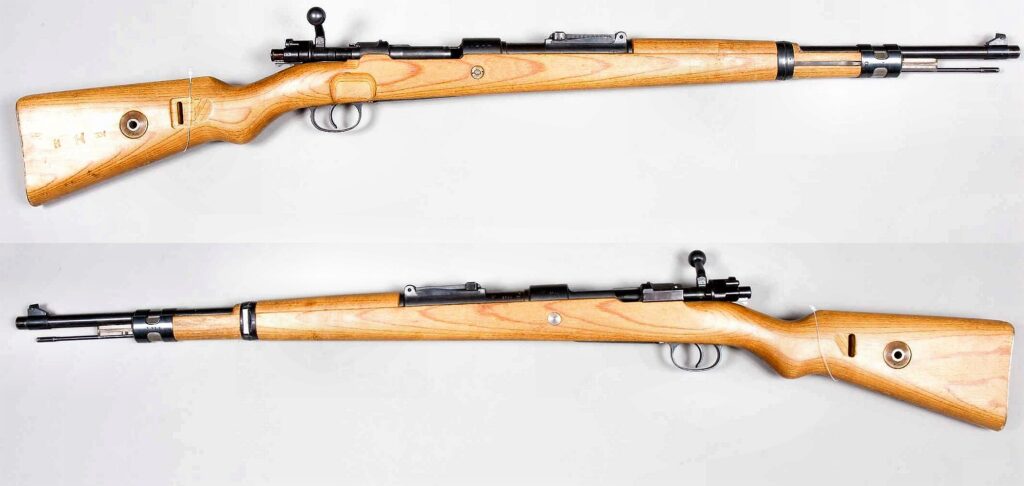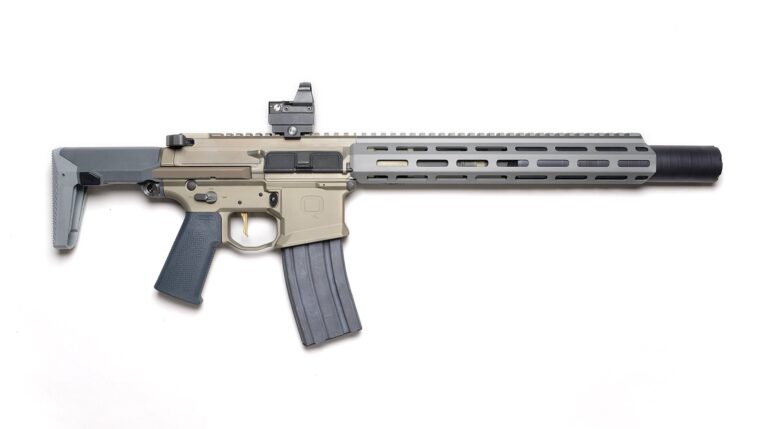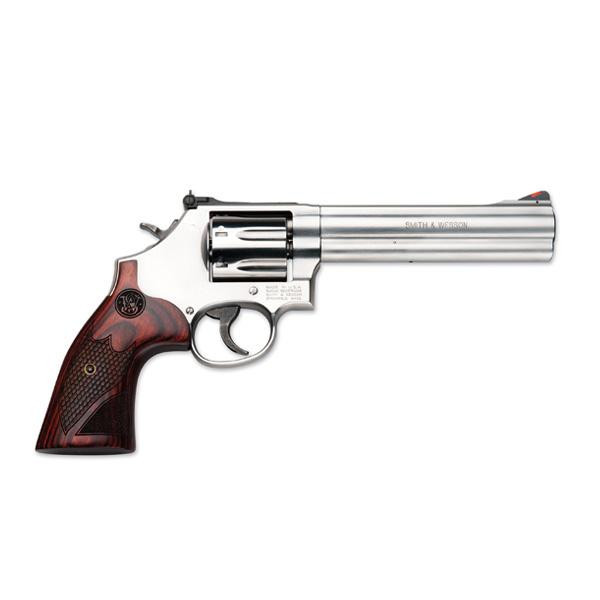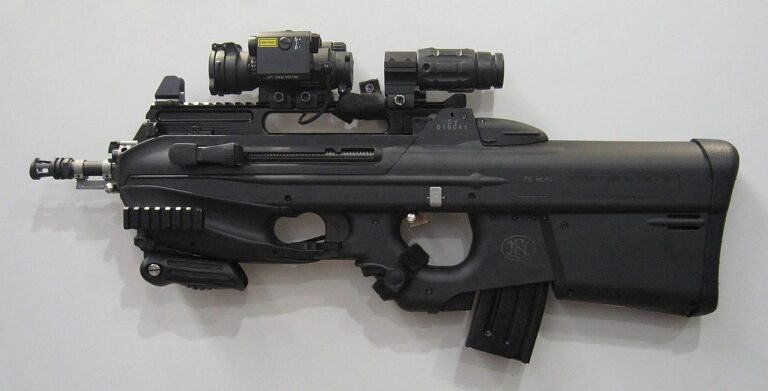Introduction
The Karabiner 98k, often abbreviated to Kar 98, is one of the most famous bolt-action rifles in history. Adopted by Nazi Germany in 1935 as a standard infantry weapon, it is derived from the Mauser Gewehr 98 used during the First World War. Renowned for its accuracy, reliability and robustness, the Kar 98k played a major role in the Second World War, equipping German troops on all fronts.
Genesis and development
The Karabiner 98k is the culmination of a long line of Mauser rifles. After the First World War, Germany was forced by the Treaty of Versailles to restrict its arms production. However, from the 1930s onwards, the German army sought to rearm and modernize its equipment. The Gewehr 98, though reliable, was judged too long for the new tactics of warfare.
The Karabiner 98k is a shortened version (karabiner meaning rifle) of the G98. It uses the Mauser 98 bolt action, renowned for its robustness, but is more maneuverable, with a shorter barrel. It was officially adopted in 1935.
Technical specifications
| Features | Detail |
|---|---|
| Caliber | 7.92×57 mm Mauser (8 mm Mauser) |
| Overall length | 1110 mm |
| Barrel length | 600 mm |
| Magazine capacity | 5 shots (internal, clip-type) |
| Empty weight | Approx. 4.1 kg |
| Mechanism | Mauser 98 twist lock |
| Starting speed | Approx. 760 m/s |
| Effective range | 500 m (increased to 2,000 m) |
Design and ergonomics
The Kar 98 features a bolt action with two front pins and one rear safety pin, for secure locking. Its fixed 5-shot magazine is blade-fed. The tangential rear sight allows shooting adjustments up to 2,000 meters.
The rifle features a solid wood stock, usually walnut or beech, with a metal buttplate. The handguard protects the barrel along most of its length, reducing the risk of burns.
The system is designed for reliability, even under extreme conditions. Its simplicity enables rapid disassembly and easy maintenance.
Main variants
Kar 98k standard
The Wehrmacht’s main model, produced in millions of units.
Kar 98k with sniper scope
Some units are equipped with a ZF39 or ZF41 scope, making the Kar 98 a formidable sniper rifle. Conversion requires selection of the most accurate barrels.
End-of-war models
Around 1944-45, manufacturing quality declined: no tanning, lower-quality wood, simplified parts. These models are nicknamed Kriegsmodell.
Exported or transformed models
After the war, many Kar 98k rifles were reused: by the French army (reconditioned rifles), or by Israeli forces who modified them to fire .308 Winchester calibers.
Comparison with other bolt action rifles
| Model | Gauge | Capacity |
|---|---|---|
| Kar 98k | 7.92×57 mm | 5 shots |
| Lee-Enfield | .303 British | 10 shots |
| Mosin-Nagant | 7.62×54 mmR | 5 shots |
The Kar 98 stands out for its robustness and precision, but is disadvantaged by its lower capacity than the Lee-Enfield and a slower rate of fire than some competitors.
Use during the Second World War
The Karabiner 98k was the standard personal weapon of German soldiers from 1935 to 1945. Used on all fronts – from the North African desert to the Soviet forests – it was appreciated for its reliability and power.
Specialized soldiers, such as snipers, are issued with Kar 98s fitted with scopes. In close combat, the rifle is often accompanied by a bayonet or used with rifle grenades.
Despite the emergence of semi-automatic rifles like the Gewehr 43 and machine pistols like the MP40, the Kar 98 remained the predominant weapon throughout the conflict.
Post-war heritage and use
After 1945, the Karabiner 98k was captured in large numbers and redistributed to several armies:
France: used by occupying forces, then reconditioned.
Israel: rechambered in .308, used until the 1960s.
Yugoslavia: licensed or recycled products.
Today, the Kar 98 is highly prized by collectors for its build quality and historical significance. It is also used in shooting sports, particularly in historical shooting disciplines.
Conclusion
The Karabiner 98k, or Kar 98, is much more than just a bolt-action rifle. It reflects an era when precision, reliability and mechanical rigor were essential to military weaponry. It remains an enduring symbol of the Second World War, and a testament to the excellence of Mauser design. Whether in museum showcases or on the firing range, the Kar 98 continues to captivate military history enthusiasts and shooters the world over.









